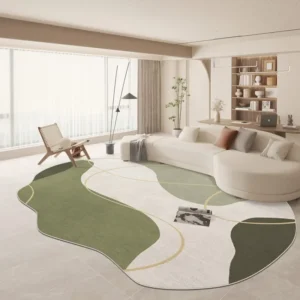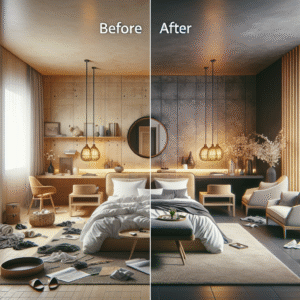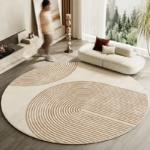In an era where environmental sustainability is becoming increasingly essential, one paradigm-shifting technique stands out: rainwater harvesting. This method not only facilitates better water usage but can also be integrated into the interior design of homes and businesses, adding function and aesthetic appeal. Imagine walking into a home that not only looks good but works towards conserving precious resources. This guide will explore how to effectively blend rainwater harvesting systems into your interior design.
Throughout this article, you will discover the advantages of rainwater harvesting, the systems available, design inspirations, and practical implementation strategies.
The Benefits of Rainwater Harvesting
Before diving into how it can enhance your interiors, let’s explore why rainwater harvesting is becoming a popular choice.
Understanding Rainwater Harvesting
What is Rainwater Harvesting?
Rainwater harvesting involves collecting and storing rainwater for reuse. This can be for purposes such as irrigation, toilet flushing, and even potable water after proper treatment.
Key Benefits
- Environmental Impact: Reduces stormwater runoff and helps in groundwater recharge.
- Cost Savings: Decreases water bills, especially in areas with high water costs.
- Self-Sufficiency: Provides a sustainable water source, reducing reliance on municipal supplies.
- Landscape Benefits: Enhances green spaces, promoting ecological biodiversity.
Integrating these benefits into your interior design can transform not just your space but also your lifestyle.
Design Considerations for Rainwater Harvesting Systems
Types of Systems
When considering rainwater harvesting for your interior space, you’ll encounter several system types. Each comes with its unique advantages depending on your design needs.
- Above-Ground Systems: Easily integrated into exterior spaces, visually attractive options.
- Below-Ground Systems: Discreet and efficient, suitable for minimalist designs.
- Green Roofs: Serve a dual purpose of rainwater harvesting and creating green spaces.
Integrating with Interior Design
Think about how pipes, tanks, and filtration systems can be invisibly integrated. For example, utilizing under-sink water filtering systems allows homeowners to use filtered rainwater in kitchen settings.
Case Studies
One notable example includes the Chesapeake Bay area, where homes utilize decorative rain barrels as features in their gardens. This not only promotes sustainability but also enhances curb appeal.
Aesthetic Integration of Rainwater Harvesting
Using Decorative Containers
Instead of traditional rain barrels, decorative containers can serve as focal points.
Architectural Considerations
Modern homes often utilize architectural features to disguise rainwater collection systems. Burying tanks underground or using decorative wall systems maximizes efficiency and retains aesthetic integrity.
Creating Functional Gardens
Water-efficient gardens that utilize collected rainwater can artistically enhance outdoor and indoor spaces, attracting various flora and fauna.
Implementation Strategies for Homeowners
Assessing Your Space
Before implementing, conduct an assessment of your area, considering roof size, landscape, and intended usage of the harvested water.
Consulting Professionals
Working with interior designers and rainwater harvesting specialists can offer invaluable insights into practical integration.
Permitting and Local Regulations
Check local regulations regarding rainwater harvesting. Many areas support these systems and may offer financial incentives.
Conclusion & Next Steps
Integrating rainwater harvesting within your interior design doesn’t just represent a trend; it encompasses a sustainable lifestyle change. By considering aesthetics, functionality, and environmental impact, you can create spaces that resonate with both beauty and purpose.
Ready to transform your home? Start with a personal evaluation of your water needs and explore various styles of integration. For more insights on sustainable living and interior design, check our related articles on energy-efficient homes and modern eco-friendly materials.
Frequently Asked Questions
What are the best practices for maintaining a rainwater harvesting system?
Regular maintenance includes cleaning gutters, inspecting tanks, and ensuring filtration systems are functioning properly. An annual check-up is recommended.
Can I use rainwater for drinking purposes?
Yes, but only after proper treatment and filtration. Always consult local regulations for guidelines on potable uses.
What are the initial costs associated with rainwater harvesting systems?
Costs vary based on system complexity, size, and installation. However, many homeowners find significant savings over time.
How does rainwater harvesting impact home value?
Properly installed systems can increase property value by promoting sustainability and efficiency, appealing to eco-conscious buyers.
Is it difficult to integrate rainwater systems into existing homes?
With the right planning and consultation, retrofitting homes is entirely feasible. Many design options enhance aesthetic appeal while improving functionality.
Content Disclaimer
Information provided in this article is for educational purposes only and should not be considered professional advice. For specific guidance, consulting industry experts is recommended.
Categories
- Accent Walls & Ceilings (13)
- Art Curation & Gallery (28)
- Bedding Style Trends (41)
- Bedroom Makeover (33)
- Bohemian & Eclectic Styles (13)
- DIY & Budget-Friendly Decor (12)
- Eco-Friendly Design (13)
- Furniture Care (32)
- Home Decor & Design Ideas (102)
- Home Wellness Spaces (13)
- Integrated Outdoor Living (12)
- Kids and Nursery Decor (13)
- Living Room Decor (33)
- Minimalist & Japandi Style (16)
- Mix & Match Techniques (32)
- Modern & Contemporary Design (12)
- Rug Sizing & Placement (32)
- Seasonal Home Decor (35)
- Small Space Solutions (17)
- Wall Art & Painting Tips (35)
Recent Posts
Recent Comments
Archives
Product Gallery
-
 Large Area Green Rugs for Bedroom Nordic Living Room Decoration Shaped Carpet Irregular Plush Lounge Rug Home Thick Washable Mat Rated 5.00 out of 5$57.07 – $359.83Price range: $57.07 through $359.83
Large Area Green Rugs for Bedroom Nordic Living Room Decoration Shaped Carpet Irregular Plush Lounge Rug Home Thick Washable Mat Rated 5.00 out of 5$57.07 – $359.83Price range: $57.07 through $359.83 -
 Nordic Style Rugs for Bedroom Morandi Living Room Decoration Carpet Large Area Geometry Lounge Rug Home Cloakroom Non-slip Mat Rated 5.00 out of 5$40.98 – $620.81Price range: $40.98 through $620.81
Nordic Style Rugs for Bedroom Morandi Living Room Decoration Carpet Large Area Geometry Lounge Rug Home Cloakroom Non-slip Mat Rated 5.00 out of 5$40.98 – $620.81Price range: $40.98 through $620.81 -
 Irregular Shapes Living Room Decoration Carpet Modern Style Rugs for Bedroom Home Thicken Plush Rug Fluffy Soft Lounge Floor Mat Rated 4.75 out of 5$58.00 – $360.83Price range: $58.00 through $360.83
Irregular Shapes Living Room Decoration Carpet Modern Style Rugs for Bedroom Home Thicken Plush Rug Fluffy Soft Lounge Floor Mat Rated 4.75 out of 5$58.00 – $360.83Price range: $58.00 through $360.83





























